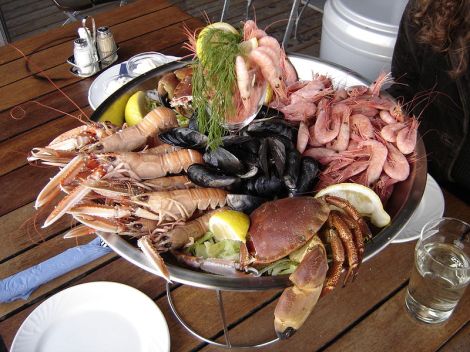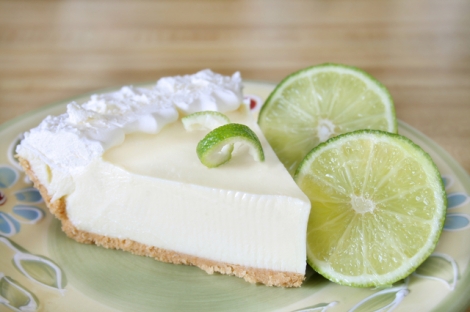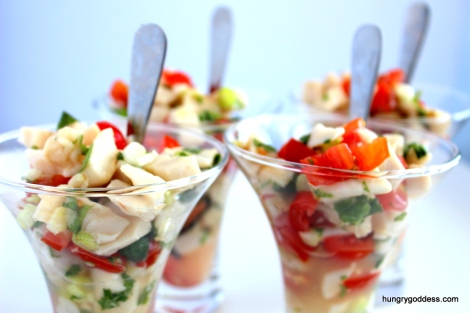
(Wikipedia)
The history of Florida’s newest, but oldest style of cuisine
The South prides itself on being one of the most distinguishable regions in the United States, and there is no exception when it comes to its food. From Memphis, Tennessee BBQ to New Orleans, Louisiana red beans and rice to low-country South Carolina seafood boil; each state brings a unique dish, cuisine, flavor or style to the Southern smorgasbord. In the state of Florida (not particularly looked in the traditional sense as being “Southern”), for the past few decades there has been an emergence in developing our own distinctive cuisine known as Floribbean (or sometimes known as “New Florida” cuisine).
What exactly is Floribbean cuisine?
You may have heard of dishes like key lime pie, paella, seafood boils, conch fritters, mango salsa, various types of rice and bean dishes, arroz con pollo (chicken with rice), mofongo, jerk chicken, and certain seafood gumbos and salads. These are all a part of Floribbean cuisine!
There are three divisions of Floribbean cuisine: Latin-Floribbean or Hispano-Floribbean, Afro-Floribbean, and Indo-Floribbean. Latin/Hispano Floribbean takes all of the elements from Latin America and the Caribbean, while Afro-Floribbean and Indo-Floribbean brings its contributions to the cuisine from its African, European (French, English, Dutch), and Asian roots.
The cuisine (which has been developing since the founding and conquest of our state), brings its own unique contribution with food, style and preparation to the Southern table with different elements of traditional Southern fare, strong influences from Latin America (mainly from Cuba, Puerto Rico, Haiti, the Bahamas, Jamaica, Dominican Republic, Argentina, Brazil, Trinidad and Tobago), and even parts of Asia (in specific China). Not only limited to these areas, but today, Jewish, Australian, and Mediterranean elements are being infused in the New Florida cuisine as well.
 (Shutterstock)
(Shutterstock)
Floribbean cuisine highly praises itself on being fresh and local. Florida is diverse in its flora and fauna and has access to various waterways and fresh produce. Fresh seafood is the highlight of the cuisine. A variety of fish, shrimp, crabs, clams, and other meats such as poultry, alligator, and different wildlife are also included. Likewise, vegetables (for example yams, potatoes, okra, eggplant, tomatoes, and various peppers – spicy and non-spicy) and fruits (papayas, mangoes, pineapple, oranges, lemons, limes, avocados, plantains); are a main staple for many native Floridian dishes. Spices, herbs, and other flavorings for example: rum, sesame seeds, oregano, garlic, black pepper, cinnamon, curry, honey, cilantro, cumin, and coconut milk, adobo, sofrito, also play a huge role in complementing the cuisine. In addition to regular cooking methods practiced in the Caribbean, Floribbean is more light-weight with using less oil, frying, and fattening ingredients. What also makes this cuisine unique is the fact that Floribbean cuisine uses hot (spicy) and cold (fresh fruits) ingredients into its dishes.
Presentation is another factor in making Floribbean cuisine stand out from other forms of cooking. The secret? Presenting the food in a manner that is simple, comforting, but colorful and contemporary. Fresh greens and herbs, fruits, and vegetables serve as garnishes.
These are many factors that make the cuisine what it is, but where did Floribbean Cuisine originate?
History of Floribbean Cuisine
Even though Floribbean cuisine is fairly “new”, it’s actually been around for hundreds of years starting with the Native Floridians themselves (particularly in the South Florida region). Many of Florida’s first natives were hunter/gatherers. They feasted on local seafood and wild game. When the Spanish arrived to Florida, they brought over foreign staples such as the pig and other delicacies. The Spanish also brought rice to the new land from China and cultivated it. Both the natives and Spaniards began trading and in return, the natives taught the Spaniards about the indigenous fruits (palm fruit, yucca, plantains, oranges, etc.), and how to fish and hunt.
When African slaves were brought over from Africa to the New World, many of their cooking methods and native foods came with them – pumpkin, yams, sesame seeds, various melons, beans, eggplant, okra, and others. Decades went by and many other groups began to settle in Florida and around the Caribbean. After Florida officially became a state in 1819, many others from around the South began to migrate to the state for jobs in agriculture (citrus farming, raising cattle), fishing, and developmental projects such as road and railroad construction. As Florida’s population grew in the 1900’s (and the state began pulling in wealth), the state saw an influx of developers and became a tourist destination. In 1926 after being hit by the Great Depression, Florida’s economy took a hard hit, especially in the citrus agriculture industry as it was also being plagued by fruit flies. World War II was Florida’s saving grace as the economy started to pick up. All of this brought an increase of migrants from different parts of the US, and immigrants from other parts of the world (especially from Latin America) – and they brought their cuisine and cooking styles with them.
Cubans escaping Castro in the 1950’s were probably the biggest contributors to Floribbean cuisine. Many discovered that native ingredients they had at home could also be grown in Florida. Cubans (with elements from their other Caribbean counterparts) contributed rice and bean dishes, salsas, sauces, different spices, and even oils, smoked meats, and pickled vegetables. They also brought over their style of BBQ infused with Southern-American BBQ which is called barbacoa.
 Conch Ceviche (TheHungryGoddess.com)
Conch Ceviche (TheHungryGoddess.com)
Floribbean cuisine is slowing making its way into the mainstream America. Today, it’s mostly accredited to being eaten in South Florida, but it has been making its way across the state and into the South and other parts of the United States. With Florida continuing to become an even more diverse state with different immigrants bringing different cooking influences (for example, many people are migrating from Central America and Mexico), these will all bring more contributions to the Floribbean dining experience.
Interested in cooking Floribbean-style cooking in your own home? Check out this simple, easy recipe for conch fritters!
